Motorola Edge 50 Fusion Review: The style champion under ₹25,000

- Stylish design and comfortable to hold
- 68 W fast charging
- Clean, bloatware-free UI
- Decent primary camera
- Display is not the most colour accurate
- Not the best for power-users
- Display lacks HDR support
Thanks to its fruitful partnership with Pantone, Motorola has become a master of design over the past few years in the smartphone industry. The Motorola Edge 50 Fusion is a standout device under ₹25,000, offering a luxurious design, decent performance, and impressive camera capabilities. However, its 144 Hz display, while bright and fluid, lacks HDR support, which might disappoint content enthusiasts. The Snapdragon 7s Gen 2 processor handles daily tasks well but falls short in gaming compared to competitors like the OnePlus Nord CE4 and Nothing Phone (2a). The camera setup is a highlight, particularly the 50 MP primary and 32 MP selfie cameras, which deliver vibrant and sharp images. Battery life is serviceable with a 5,000 mAh cell and 68 W fast charging, though power users may need to recharge by evening. Overall, the Edge 50 Fusion excels in design and camera performance, making it a compelling choice for those who prioritise aesthetics and photography, but it faces stiff competition in performance and display quality from rivals in its price range.
Motorola has been on a roll in 2024, consistently delivering stellar products one after another. The company even achieved an impressive 110 per cent year-over-year growth in shipments, according to the International Data Corporation (IDC)’s Worldwide Quarterly Mobile Phone Tracker. One notable launch this year was the Motorola Edge 50 Pro, which I described in my review as “a nearly perfect mid-range phone.” Now, just two months later, Motorola has introduced a more affordable version of the Edge 50 Pro, dubbed the Motorola Edge 50 Fusion.
To keep costs down, the Edge 50 Fusion makes some compromises, such as using cheaper materials, incorporating a less powerful processor, and forgoing the telephoto lens. However, priced at ₹22,999, it still offers enough features to be intriguing—at least on paper. With competitors such as the OnePlus Nord CE4 (review), Realme Narzo 70 Pro (review), and Nothing Phone (2a) (review), there’s little room for error though. So, let’s see how the Motorola Edge 50 Fusion stacks up against these phones in my detailed review.
Motorola Edge 50 Fusion Review: Build and Design
Set the Motorola Edge 50 Pro and Edge 50 Fusion side-by-side and many will find it difficult to tell the siblings apart. The curved edges, elegant contours, and seamless camera module design is nearly identical. The design screams luxury; it is commendable that Motorola has brought this level of opulence at the sub-₹25,000 price point. However, there are a few subtle differences between the 50 Pro and 50 Fusion when it comes to the build.

Firstly, the Edge 50 Fusion is slightly slimmer and lighter, at 7.9 mm and 175 g respectively. However, given the lower price point, Motorola has opted for a plastic frame in contrast to the more premium aluminium frame on the Motorola Edge 50 Pro. Both come equipped with an IP68 rating though, making this phone one of the only devices under ₹25K with flagship-level dust and water resistance.

Once again, the Pantone collaboration delivers some gorgeous colour options including Forest Blue (matte finish), Hot Pink (vegan suede), and Marshmallow Blue (vegan leather). I got the Marshmallow Blue variant for review and immediately fell in love with the attractive pastel hue. The box houses a translucent plastic case; sadly it’s not colour-matched like the one found in the Motorola Edge 50 Pro’s box but you can see the rear panel’s colour through the translucent material, so, it’s all good.

Given that it is lighter and slimmer than the Edge 50 Pro, the in-hand feel is even better—which is excellent since the Edge 50 Pro was already one of the most ergonomic phones. The back panel of the Motorola Edge 50 Fusion is nice and grippy but the in-display optical fingerprint sensor is on the slower side. The haptics are good and the buttons have optimal tactility too. This is, without a doubt, one of the best-designed phones you can get your hands on under ₹25,000; and it is my personal favourite.

Motorola Edge 50 Fusion Review: Display
Motorola’s display choices involve some compromises that may disappoint users, especially given that competing phones have fewer trade-offs. For example, while Motorola opts for a higher refresh rate of 144 Hz, it does not support HDR. Additionally, the 144 Hz refresh rate does not activate in Auto/Adaptive mode, meaning that if you select it in the settings, your battery life will suffer significantly.
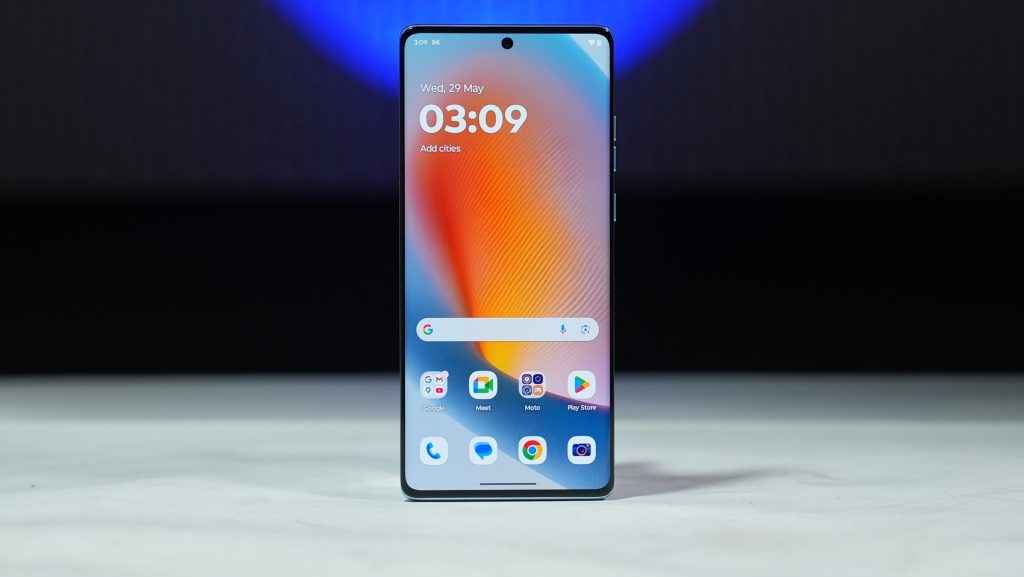
Personally, I would prefer a 120 Hz display with HDR10+ support, like those offered by competing phones such as the OnePlus Nord CE4, Realme Narzo 70 Pro, and Nothing Phone (2a). Although the phone supports Widevine L1, allowing HD content streaming on OTT platforms, the absence of HDR is a notable drawback in this price range. Given the fact that so many of us consume content on our smartphones today, HDR support is increasingly important for an ideal viewing experience.
Additionally, the colour accuracy is also off. Colours appear far too vivid and contrasty, making things look unnatural. While some may prefer this look, it is far from accurate.

Let me get the rest of the display specifications out of the way. The Motorola Edge 50 Fusion has a 6.7-inch pOLED display with Full HD+ resolution and 144 Hz refresh rate. It is a 10-bit display with a peak brightness of 1,600 nits on HBM (High Brightness Mode). I’ve already highlighted my gripes, so let me talk about a few of the positives. The display is quite bright and it has excellent viewing angles. Blacks look inky deep on the OLED panel as well. In my tests, the Motorola Edge 50 Fusion’s display got a reading of 1,206 nits of brightness under bright sunlight on HBM, which is excellent.
All in all, the display is a mixed bag—the lack of HDR is irksome, but the brightness levels and viewing angles are great for the price.
Motorola Edge 50 Fusion Review: Performance and UI
The Motorola Edge 50 Fusion is not for power users. It houses the modest Qualcomm Snapdragon 7s Gen 2 processor; meanwhile competitors like the OnePlus Nord CE4 and Nothing Phone (2a) house more powerful processors. The phone has 8/12 GB RAM and 128/256 GB internal storage, and there’s no expandable memory support. Multitasking is smooth for the most part, but it can struggle from time to time when more than 15 apps are open. Additionally, the camera app can get particularly laggy at times.

In synthetic benchmarks, the Motorola Edge 50 Fusion lags behind most of its competitors. The OnePlus Nord CE4, Realme Narzo 70 Pro, and Nothing Phone (2a) raced ahead in the AnTuTu benchmark. In GeekBench, the phone was beaten by the OnePlus Nord CE4 convincingly in both tests, but it got a better score than the Nothing Phone (2a) in the Multi-Core test and the Realme Narzo 70 Pro in both Single and Multi-Core tests.


Furthermore, it also beat all its competitors in the PCMark Work benchmarks, which shows its prowess at productivity tasks. The phone also performed admirably well in the CPU Throttling Test, throttling to merely 92 per cent of its peak performance, so its stability is uncompromised even during intensive tasks.

Sadly, it considerably lags behind the OnePlus Nord CE4 and Nothing Phone (2a) in GPU benchmarks such as 3D Mark and GFXBench. In real-world gaming, the phone can easily handle intensive games such as Call of Duty: Mobile and BGMI on Low to Medium graphics, but push it any further and you will face a fair amount of stutters. You also cannot reliably play games such as Genshin Impact as the amount of lag can disrupt your gameplay experience.
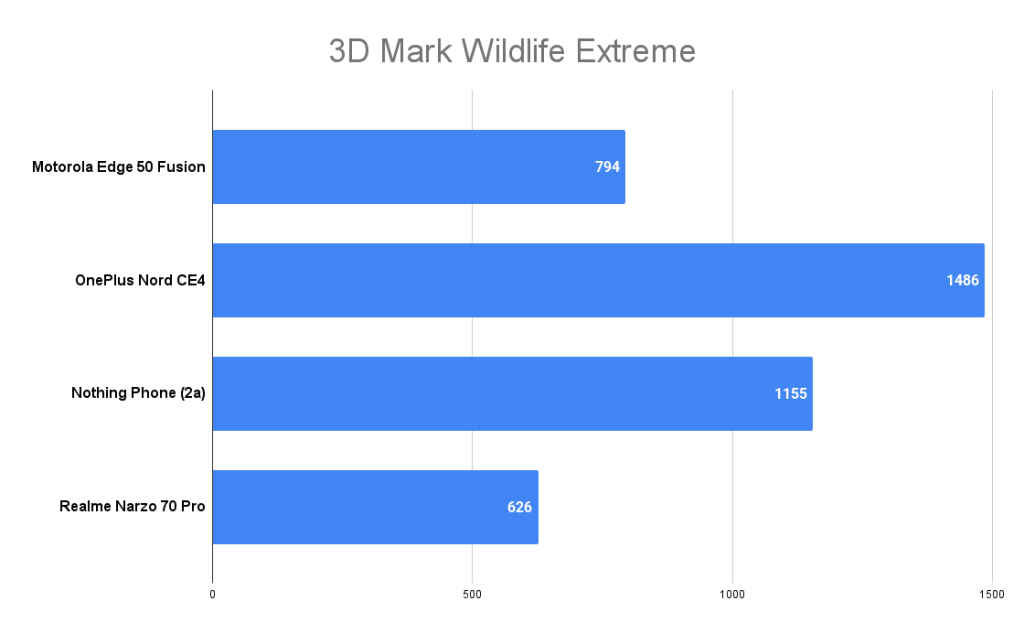

So, naturally, this is not the ideal device for hardcore mobile gamers and power users, but for general users, the day-to-day experience is pretty smooth. Hello UI is also one of the cleanest Android skins on the market currently, making the experience more seamless and enjoyable. There are no third-party bloatware apps, which is a rarity in the mid-range Android phone landscape. Additionally, the company has promised three major Android updates and four years of security updates, which is a step in the right direction.
How do the cameras perform?
The Motorola Edge 50 Fusion features an impressive camera setup, led by a 50 MP Sony Lytia 700C primary camera with OIS support. This is complemented by a 13 MP ultrawide camera with Auto Focus, which doubles as a macro lens—a feature Motorola has been championing, and one that other smartphone manufacturers should consider emulating. For selfies and video calls, the phone offers a capable 32 MP front camera.

Photos taken with the primary camera in ideal lighting conditions are vibrant and ready for social media. The images have high contrast and are significantly sharpened, which, while not the most natural look, can be appealing to those who prefer photos requiring minimal to no editing. The dynamic range is decent, capturing sufficient detail in both highlights and shadows. Portrait shots are particularly noteworthy, with excellent edge detection and decent colour accuracy.




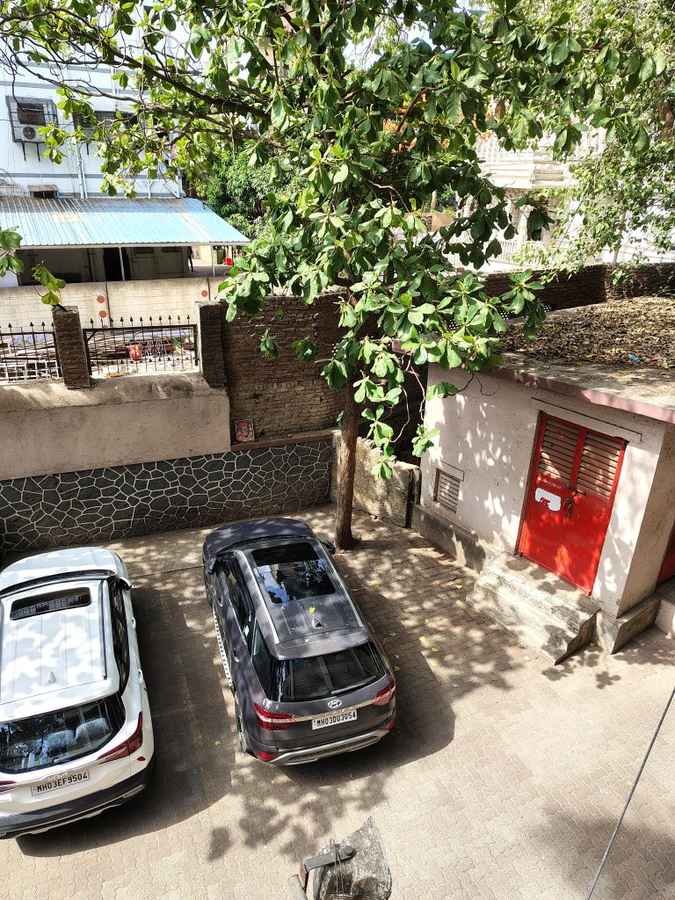



The 13 MP ultrawide camera maintains the high-contrast aesthetic but tends to produce slightly grungier photos due to less detail in shadow areas, resulting in a darker overall look.


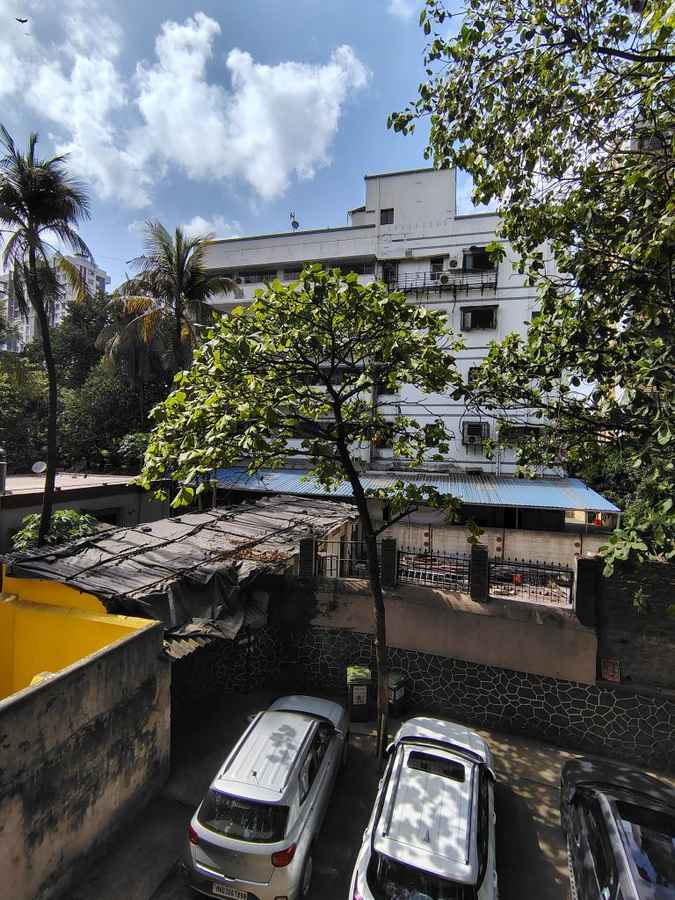
In low light though, ultrawide photos have excessive noise and chromatic aberration. In contrast, the primary camera fares better in low light. There is some lens flare, but its decent for the price.



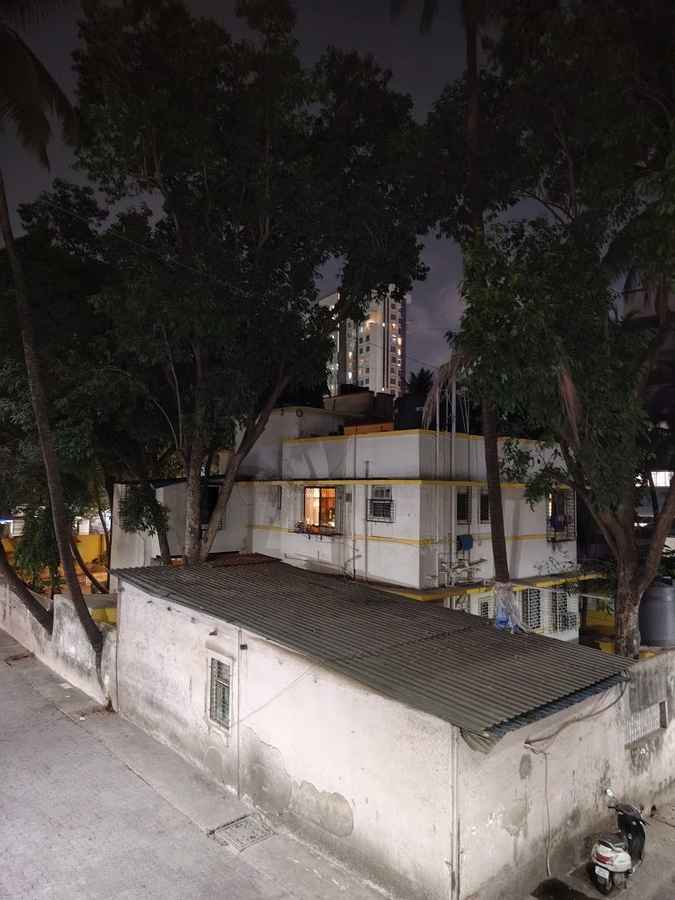

Macro mode stands out as one of the best in this price range, thanks to the ultrawide lens’ autofocus capabilities.

The 32 MP selfie camera is one of the best in its segment, delivering crisp and detailed shots in both daylight and low light. It excels in colour accuracy and dynamic range, making it a reliable choice for all your selfie needs.



Motorola Edge 50 Fusion Review: Battery life
The Motorola Edge 50 Fusion draws power from 5,000 mAh cell. The phone supports speedy 68 W TurboPower fast charging which tops the phone up from 0-100 percent in just 57 minutes, according to my tests. The battery life, while not the best on the block, is serviceable for most. The phone gave me a good 5-6 hours of screen-on time, which is capable of getting a majority of users through a whole day. Power users may need to top it up in the evenings though.
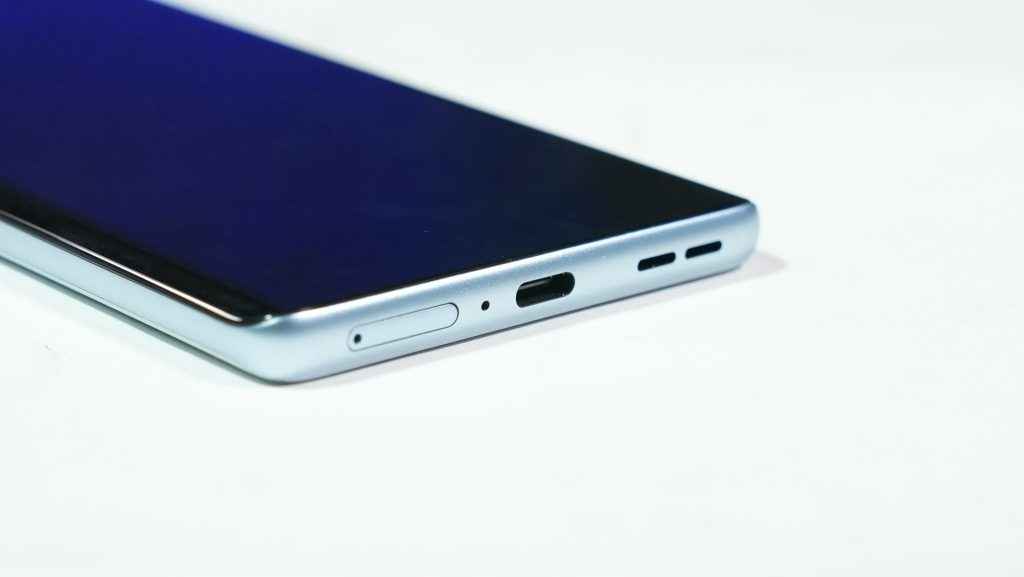
In our 4K video loop test on VLC, the phone ran for 13 hours and 31 minutes, which is pretty decent battery endurance. Playing games such as COD: Mobile for 15 minutes drains the battery by 5 per cent. All in all, if you’re looking for a mid-range phone with the absolute best battery life, this is not the phone for you. However, if you’re a casual user, the battery life of the Motorola Edge 50 Fusion is decent enough.
Should you buy?
Thanks to its fruitful partnership with Pantone, Motorola has become a master of design over the past few years in the smartphone industry. The Motorola Edge 50 Fusion is a standout device under ₹25,000, offering a luxurious design, decent performance, and impressive camera capabilities. However, its 144 Hz display, while bright and fluid, lacks HDR support, which might disappoint content enthusiasts. The Snapdragon 7s Gen 2 processor handles daily tasks well but falls short in gaming compared to competitors like the OnePlus Nord CE4 and Nothing Phone (2a).
The camera setup is a highlight, particularly the 50 MP primary and 32 MP selfie cameras, which deliver vibrant and sharp images. Battery life is serviceable with a 5,000 mAh cell and 68 W fast charging, though power users may need to recharge by evening. Overall, the Edge 50 Fusion excels in design and camera performance, making it a compelling choice for those who prioritise aesthetics and photography, but it faces stiff competition in performance and display quality from rivals in its price range.
Motorola Edge 50 Fusion Key Specs, Price and Launch Date
| Release Date: | 03 Jun, 2024 |
| Market Status: | Launched |
Key Specifications
Storage
128 GB
Battery capacity (mAh)
5000
Rear Camera Megapixel
50 + 13
Screen size (in inches)
6.7
Dhriti Datta
Perpetually sporting a death stare, this one can be seen tinkering around with her smartphone which she holds more dear than life itself and stuffing her face with copious amounts of bacon. View Full Profile


